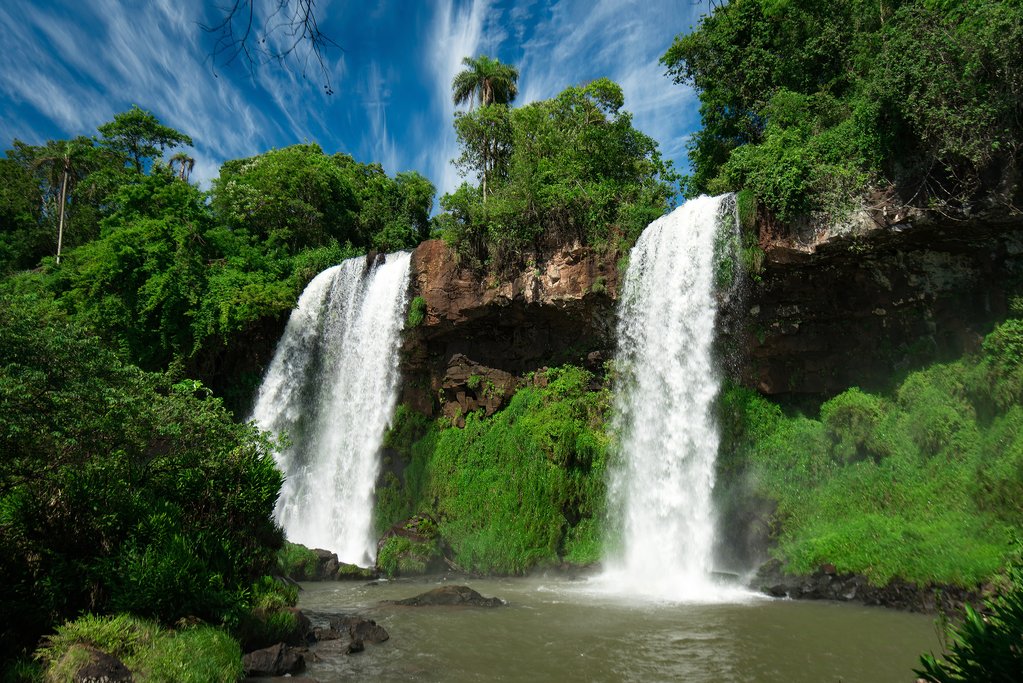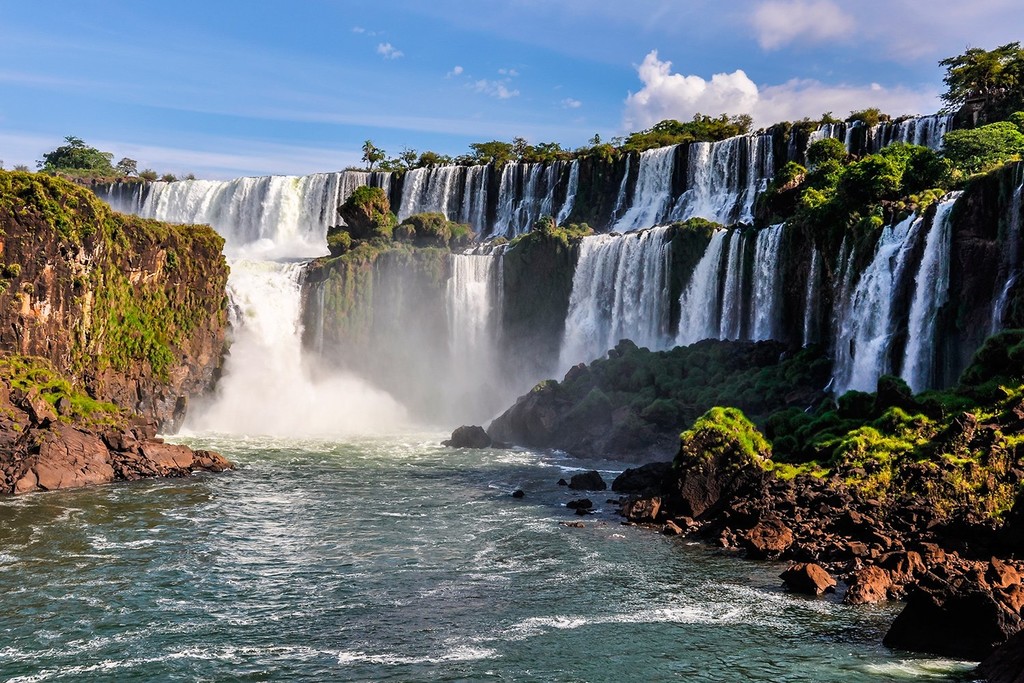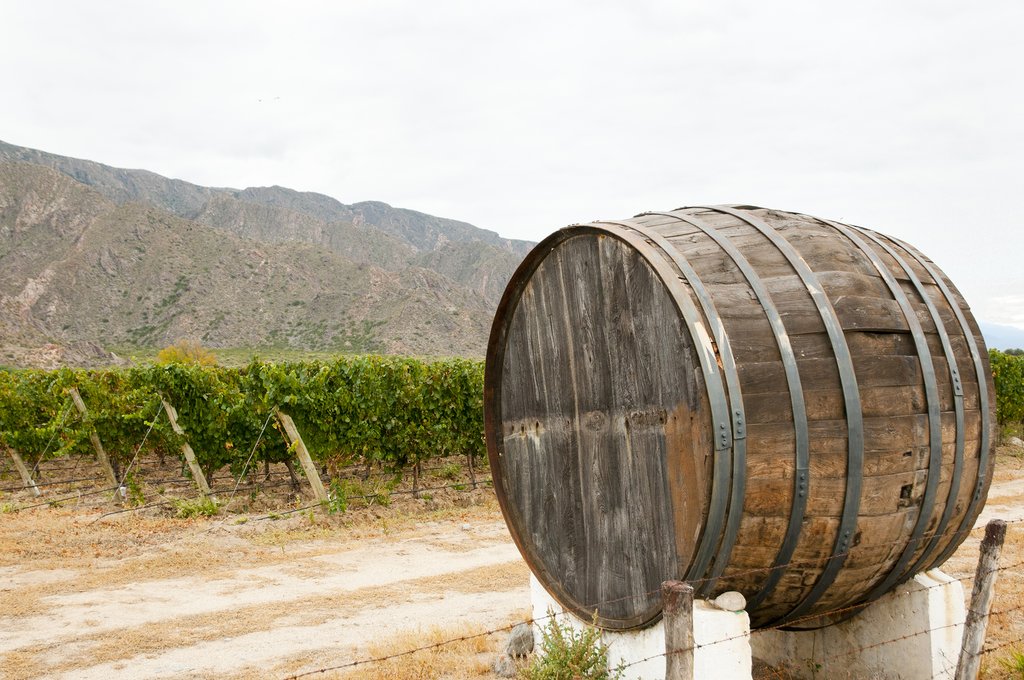
Discover Northern Argentina - 8 Days

Highlights
- Hit the pavement to see the best sites in Buenos Aires
- Explore several areas of the largest waterfall system in the world
- Ride Salta's scenic gondola and check out its folk music scene
- Drive the historic Humahuaca route, once used by hunter-gatherers
- Visit wineries near Cafayate and enjoy the pleasant year-round climate
Brief Itinerary
| Day | Highlights | Overnight |
|---|---|---|
| Day 1 | Arrival in Buenos Aires - Explore the City | Buenos Aires |
| Day 2 | Fly from Buenos Aires to Puerto Iguazu | Puerto Iguazu |
| Day 3 | Explore Iguazú Falls (Argentine Side) | Iguazu Falls |
| Day 4 | Fly from Iguazu to Salta | Salta |
| Day 5 | Quebrada de Humahuaca Excursion | Salta |
| Day 6 | Jujuy Province & Great Salt Flats Excursion | Salta |
| Day 7 | Cafayate Tour & Wine Tasting | Salta |
| Day 8 | Fly from Salta to Buenos Aires - Departure |
Detailed Itinerary
Day 1: Arrival in Buenos Aires - Explore the City

Welcome to Argentina! Renowned as the "Paris of South America," and the "Queen of El Plata," the capital city of Buenos Aires is defined by passion. This is exemplified in the rich tango heritage and its citizens' limitless enthusiasm for fútbol (soccer), which is far and away the country's most popular sport.
When you arrive at the airport, your driver will be waiting to take you in a private car to your hotel where you can relax after a long flight. But make no mistake: the city will beckon you. So after a quick recharge, be sure to venture out into the welcoming arms of Buenos Aires and explore. The best starting point would be the city center.
Suggested activities include:
-
Visit the Obelisco, which might be the most famous icon of the city. This obelisk (which even Argentines admit is a little too reminiscent of the Washington Monument) is worth a visit for its location alone. It sits right in the middle of Avenida 9 de Julio, which boasts a whopping 16 lanes, making it the widest city street in the world.
-
Stop by the Teatro Colon, one of South America's premier opera houses. The horseshoe-shaped gallery features 2,487 seats and incredible acoustics. Even if you plan on taking a tour or catching a show here on another day, it's always breathtaking to pass by its exterior. The Colon's neoclassical facade has been the face of one of the most handsome buildings in Buenos Aires since its opening in 1908.
-
Stroll Puerto Madero, an upscale waterfront neighborhood adjacent to downtown. Puerto Madero may be the "new money" finance center of Buenos Aires, but it's also one of the most pleasant walks in a city famous for its walking areas. A romantic stroll involves walking over the canal on the Puente de Mujer ("Woman's Bridge") at sunset.
- Dine at an Argentine steakhouse or parilla. When night falls and dinnertime arrives, do like the locals and enjoy a thick, juicy steak (Argentina has some of the best beef in the world) drizzled with the nation's famous chimichurri (a garlic, herb, and vinegar sauce). Know that Buenos Aires is a culture that thrives after dark, and it's not uncommon for locals to have dinner well past nine in the evening, especially on weekends.
Day 2: Fly from Buenos Aires to Puerto Iguazu

After breakfast, you will be transferred to the Buenos Aires airport for your flight to Puerto Iguazu. This city is home to the Argentinian side of Iguazu falls, the world's largest waterfall system. Upon arrival in Puerto Iguazu, you will be transferred to your hotel.
You will have the rest of the day free to relax, visit the Three Borders Landmark in the tri-border area between Argentina, Brazil, and Paraguay, and enjoy a panoramic view of Iguazu Falls from the walking paths surrounding the cascades.
Day 3: Explore Iguazú Falls (Argentine Side)

After breakfast at your hotel, a driver will pick you up and transfer you to the entrance of Iguazú National Park, on the Argentine side of the falls. This is where you will begin the day's adventure. It's a full-day excursion that involves traversing three circuit routes around the falls, each offering exceptional vantage points from which to view this magnificent natural wonder.
The three circuit routes include:
-
The upper circuit (1 hour), which features 2,624 feet (800 m) of catwalks. These walkways are elevated from the jungle surface so as not to disrupt the natural pathways used by the indigenous fauna. The circuit affords views of the upper portion of Iguazú; that means you'll be treated to no shortage of panoramic vistas of the surrounding falls.
-
The lower circuit (2 hours), which consists of 5,250 feet (1,600 m). These are also elevated and offer views from directly below and around Iguazú falls. This circuit takes you near the base of the falls and provides a unique experience where you'll be up close with the natural surroundings, feeling the magnitude of the falls from up close.
- Devil's Gorge (2 hours), enjoys an intimidating reputation that will precede your arrival to the park. This is the star of the show and the biggest of the some 275 falls that makeup Iguazú. A small tourist train leaves from within the park at the Cataratas Station and travels 18 minutes to Garganta Station, where you'll find restrooms, a snack bar, and the start of the wooden pathway to the falls. Then a walk of about 3,937 feet (1200 m) will take you over the river, culminating at a viewpoint. Just hearing the plunging falls reverberating in your ears is a one-of-a-kind experience. Actually peering 269 feet (82 m) down into the cavernous abyss as the highest of Iguazu's falls thunders all around you is downright unforgettable.
At the end of the tour, the driver will pick you up and transfer you back to the hotel.
Chat with a local specialist who can help organize your trip.
Day 4: Fly from Iguazu to Salta

After breakfast, you'll be driven to the airport for your flight to Salta where you'll be met and transferred to your hotel. The city is often referred to as Salta 'La Linda' (meaning Salta the beautiful) due to its well-preserved colonial architecture, circa 16th century, and year-round warm climate. In the afternoon you will take a guided city tour visiting Salta's most important buildings and churches.
From here you will have free time to stroll around the craft market and pick up traditional products from rugs to pottery. In the evening, enjoy a traditional Argentinian dinner at a cozy local restaurant
Day 5: Quebrada de Humahuaca Excursion

There are few more mystic, historic, and evocative areas in Argentina than the Quebrada de Humahuaca. This arid desert valley gets its start in the high altitude Andean plateaus before running down into Jujuy Province and meeting the Río Grande, at which point it forms a 96-mile (155-km) corridor.
Believe it or not, this valley gorge, which runs from north to south, has been populated and used by humans for over 10,000 years, starting with the earliest hunter-gatherers. It then became an important Incan trading route in the 15th and 16th century, and later became a link between the Viceroyalty of the Río de La Plata, in Buenos Aires, and the Viceroyalty of Peru. It was even an important battleground in the War of Independence. You can see remnants of pre-hispanic towns here, and small white churches still dot the stratified rocks that make up the landscapes.
Your tour of the area begins with an early morning pickup at your hotel in Salta. The first place you'll visit is the village of Purmamarca, where you'll find the famous Cerro de Siete Colores (Hill of the Seven Colors), which is notable for its strata, which is seemingly "painted" various shades of red. Other notable sites in the village include the whitewashed Iglesia de Santa Rosa, and the artisanal craft market.
Then head a few miles north to the town of Tilcara and Pucará de Tilcara, the hilltop remains of a pre-historic fortress where you'll visit a fascinating archeological museum. Next is Huacalera, located just north of the Tropic of Capricorn (a giant sundial marks the exact location). From here you'll visit the tiny village of Uquía, which boasts one of the most impressive whitewashed churches in the region, the Iglesia San Francisco de Paula, which was built in 1691. Inside you'll find a number of paintings done in the Cuzco style and featuring angels in 17th-century battle dress. Before lunch, you'll arrive at the town of Humahuaca, which is denoted by its labyrinthine narrow streets, adobe houses, and its monument to independence, El Indio, done by sculptor Soto Avendaño.
After lunch, your tour will continue to the town of Maimará, notable for its haunting hillside cemetery and the brightly colored mountains that surround it. These are known as La Paleta del Pintor (The Painter's Palette). If time allows, we will return to Salta via the Abra de Santa Laura (a mountain path lined with subtropical vegetation), which is surrounded by stunning scenery, including Las Maderas Dam, and Campo Alegre reservoir.
The tour ends with a return to your hotel in the mid-evening, with enough time to sample more of the local dining scene.
Day 6: Jujuy Province & Great Salt Flats Excursion

Today, it's time for another tour in the Salta area. Like yesterday, you'll be picked up from your Salta hotel in the early morning to start this full-day tour.
First, you will travel to the ruins of Tastil to arrive at San Antonio de Los Cobres. There, have a lunch break. Afterward, we drive by National Route No. 40 until reaching Salinas Grandes or the Great Salt Flats, right on the border between Salta and Jujuy. There, we will have free time to take pictures and enjoy this unique natural environment, where the large extension of white salt contrasts with the blue of the sky.
Then, we start the descent down Cuesta de Lipán where we usually see condors. After that, we will visit the typical Purmamarca village and its Cerro de los Siete Colores.
In the evening, you'll return to Salta in time for dinner out on the town.
Day 7: Cafayate Tour & Wine Tasting

Today you'll be visiting the village of Cafayate, located in the middle of the Calchaquí Valley. The optimum growing conditions here rival Mendoza so you're in for some scenic vistas with mountain landscapes and impressive rock formations. Upon arrival you will visit one of the area's famed wineries and, of course, indulge in a tasting.
The excursion begins with a pickup at your hotel, at which point you'll drive through the Lerma Valley, passing alongside tobacco fields and colonial villages featuring German-style architecture. You'll then enter the Quebrada del Río de las Conchas, where you'll see curious rock formations (the result of erosion caused over time by wind and water). There are many noteworthy sights here, with names as unique as the formations: the dunes, the toad, the bishop, the devil's throat, castles, amphitheater, among others.
Then, continue along the National Route 68, arriving in the village of Cafayate, which is internationally recognized for its wine production. The most popular varietal grown here is Torrontés, which you'll get a chance to taste when you visit a regional winery. At the end of the day you'll return to Salta by the same route which you arrived; however, with the sun lower in the sky, the high-altitude landscapes will be all the more evocative.
Day 8: Fly from Salta to Buenos Aires - Departure

After breakfast, say goodbye to the city of Salta and transfer to the airport for your flight to Buenos Aires. Upon arrival in Buenos Aires, transfer to the international terminal for your return flight home. ¡Buen viaje!
